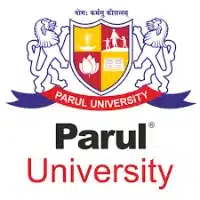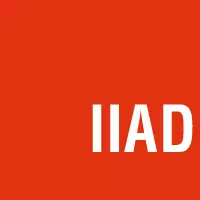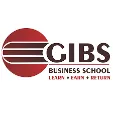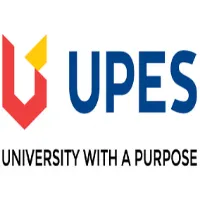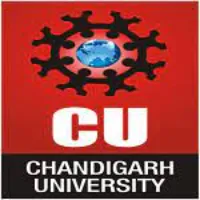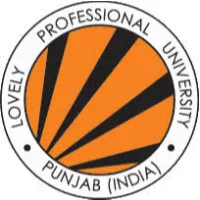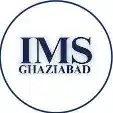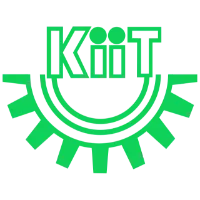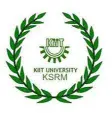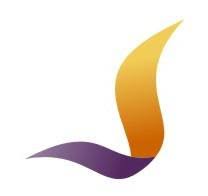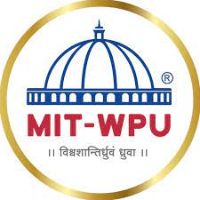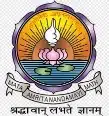Latest Applications Open 2024:
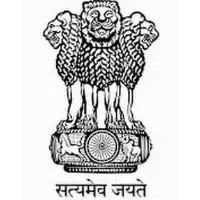
Assam Secondary TET 2024 Syllabus will be released on November 2024. Many candidates may appear yearly in the ATET Examination based on their Eligibility Criteria.
Here, through this content, applicants will get detailed information about the Assam Teachers Eligibility Test, including ATET Syllabus 2024.
Assam TET 2024 Previous Year Syllabus – Available
Assam TET 2024 Previous Year Syllabus has been Available for Paper I. Click Here to Check the Syllabus.
Assam TET 2024 Previous Year Syllabus has been Available for Paper-II. Click Here to Check the Syllabus.
Assam TET Syllabus 2024
The ATET Syllabus should prefer by all of the candidates who have applied to the ATET examination. The syllabus details are mentioned below.
Syllabus for Paper I
Child Development (For children 6-11 years group): (30 Marks)
Concept and Stages of Development, Characteristics of different stages of Development:
Latest Applications For Various UG & PG Courses Open 2024
-
- Parul University | Admissions Open for All Courses 2024. Apply Now
- UPES Dehradun | Admissions Open for All Courses 2024. Apply Now
- Chandigarh University | Admissions Open for All Courses 2024. Apply Now
- LPU 2024 | Admissions Open for All Courses 2024. Apply Now
- IIAD, Delhi | Admissions Open for All Courses 2024. Apply Now
- GIBS, Bangalore | PGDM Applications Open. Package upto 15.5 LPA. Apply Now
- GNIOT, Greater Noida | Admissions Open for All Courses 2023. Apply Now
- The Design Village | Admissions Open for All Courses 2024. Apply Now
- IMS Ghaziabad UC Campus | Admissions Open for All Courses 2024. Apply Now
- KIIT School of Management | Admissions Open for All Courses 2024. Apply Now
- KSRM | Admissions Open for All Courses 2024. Apply Now
- Jaipuria Institute of Management | Admissions Open for All Courses 2024. Apply Now
- NIIT | Admissions Open for All Courses 2024. Apply Now
- MITWPU | Admissions Open for All Courses 2024. Apply Now
- Amrita B.Tech | Admissions Open for All Courses 2024. Apply Now
- KL University | Admissions Open for All Courses 2024. Apply Now
- Alliance MBA | Admissions Open for All Courses 2024. Apply Now
- Alliance UG | Admissions Open for All Courses 2024. Apply Now
- Factors influencing Child Development– Biological, heredity, Psychological, and Environmental factors.
- Dimensions of Child Development- Physical, Cognitive, Emotional, Social, and Moral.
Development of language during early childhood and later childhood. - Individual differences- Concept and areas of individual Differences- Intra and inter-individual differences in various areas of interest, Habit, Aptitude, intelligence, Creativity, and their assessment.
- Personality– Concept, types of Personality, and factors influencing personality.
- Common Behavioural Problems of Children– Attention Deficit Hyperactivity Disorder, Oppositional, Defiant Disorder, Conduct Disorder, Causes, and Remedies.
- Adjustment-Concept of Mental Health and Hygiene.
Process of Learning Meaning and Nature of Learning.
- Factors Affecting Learning.
- Maturation and Readiness for learning.
- Motivation and Learning.
- Methods of Learning, Major Laws of Learning with their educational implications.
Theories of Learning:
- Connectionism (Stimulus-Response Theory):
- Conditioning – Classical and operant.
- Constructivism
Pedagogy
- Knowledge of children from Diverse Context — Socio-cultural backgrounds, Children with special needs inclusive education, Understanding Children with learning difficulties and Behavioural problems.
- Organizing Teaching- Teaching as Planned activity, Phases of Teaching (pre-active, interactive, and Post active Phases), Different methods of teaching – Lecture method, project method, demonstration method, Heuristic Method, Concept of TLM and its importance, Diagnostic and remedial teaching.
- Classroom Management– Role of Teacher and the students, Leadership, quality,.eLls..her, time and task Management, Concept of child-centred teaching and competency-based teaching.
- Evaluation– Continuous and Comprehensive Evaluation, Formative and summative evaluation.
Language II (English) (30 Marks)
Pedagogy of Language Teaching
- Development of four skills: Listening, speaking, reading, and writing.
- Elements of language, the preliminary concept of language functions.
- Learning and acquisition
- Vocabulary development structure of the sentence.
- Teaching-learning materials in English
- Continuous and comprehensive assessment of the four skills speaking’ skills: Listening, Speaking, reading, and writing.
Method:
- Approaches, Methods, Techniques, and Strategies
Grammar:
- Parts of speech ( use of noun, adjective, adverb) Parts
- Jumbled words/sentences
- The correct form of the verb, Tense
- Verb. phrases
- Article/determiners
- SynonymsiantonYms
- Prepositions
- Punctuation
- pattern/wh-questions, tag questions Question.’
- Sentence pattern/types of Sentence.
- Contracted Form
- Connectors linking words (use of ‘but’ ‘and’ etc.)
Mathematics
Numbers–
- Natural numbers, whole numbers, Even and odd numbers, prime and composite numbers, Place value system, four fundamental operations on the number on (Addition, Subtraction, Multiplication, and Division), factors and multiples, prime factors, Lowest Common multiples (LCM), Highest Common factors (HCF), skip Counting, Group Counting, Comparision, Ascending and Descending order, Application Number in real life, the unitary method in Average.
Fraction
- Concept of Fractions, types of Fractions, Addition, Multiplication, Subtraction, and Division of Fractions, Decimal Fractions, Percentage, and their use.
Money
- Concept of Money, Conversion of rupee to Paisa and vice versa, four options for solving problems involving profit and loss.
geometry and mensuration
- Concept of understanding of different Shapes, lines, line segments, rays, Angles, types of Angles, Types of triangles, Types of Quaidiletral, Circles, Length, Perimeter, and Area of Different Geometrical Figures, Weight, Time, Capacity & Volume.
Data Handling
- Introduction to Data, Representation of Data, Pictograph, Bar Diagram, Pie Chart and Draw Inferences.
Integration of ICT in Teaching Mathematics
- Importance of ICT in Teaching Mathematics.
- Use of ICT in Teaching Mathematics.
Environmental Studies (30 Marks)
Children’s Environment {Near and far)-
Types of environmental and Social Environment:
- Natural environment (Qiotic and abiotic component): Plants and animals in surroundings, Ecosystem (pond and grassland), producer, primary, secondary and tertiary consumer.
- Social and man-made environment: Family, house, neighbourhood, social institutions, State, Districts, Gaon Panchayat, our neighbouring states (North East).
- Some social issues: literacy, child labour, superstition, gender discrimination, Use of computers, and the internet as means of communication.
Environment and Child’s Needs-
- Air: the importance of air, the composition of air.
- Water: the importance of water, water sources, uses of water.
- Soil: the importance of soil, types of soil, soil erosion.
- Food: Types of food, food deficiency-related disease.
- Plants: Cultivated plants, plants with medicinal value, the importance of plants in ecological
balance, and the interdependence between plants and animals. Plants in a different environment.
Care and Protection of Environment-
- Conservation of Natural Resources: Flora, fauna, endangered and rare species, National Parks, Wildlife Sanctuary, Migratory Bird.
- Transport system and road safety measures, storage of Agricultural. Products.
- First aid as a safety measure, health care, and cleanliness.
- Disaster risk reduction (pre-disaster, during disaster, and post-disaster ).
- Preventive measures for different infectious diseases caused by various microorganisms.
- National Integrity.
- Constitution of India, the preamble, directive principles, fundamental rights, and duties.
- The role of Assam is the freedom movement.
Pollution (air, water, soil)- its impact and measures to prevent.
Pedagogy
- Concept, meaning, and approach of environmental studies.
- Nature and scope of environmental studies.
- Objectives of teaching environmental studies.
- Different approaches to teaching environmental studies.
Integration of ICT in teaching Environmental Science-
- importance of ICT in teaching Environmental Science.
- Use of ICT in teaching Environmental Science.
Syllabus for Paper II
Child Development (For children of 12-14 years age group) (30 Marks)
- Factors influencing development- Concept and Stages of Development, Biological, Psychological, and Environmental factors.
- The dimension of Child Development- Physical changes, Cognitive, Emotional, Social, and Moral
Understanding changes during the stages of development. - Individual Differences- Concept and areas of individual differences, Intra and Inter-individual differences in Various areas of interest, Habits and Aptitudes, Intelligence, Creativity, and their Assessment.
- Personality- Concept of types of Personality and factors influencing concept personality.
- Adjustment- Concept of Mental Health and Hygiene
- Adolescence- stages of Adolescence, problems of adolescence, adolescence education, Guidance and Counseling, Understanding Developmental Hazards.
Process of learning
- Mealing and Nature of Learning
- Factors Affecting Learning.
- Maturation and Readiness for Learning
- Motivation and Learning.
- Methods of Learning, Major Laws of Learning with their educational implications.
Theories of Learning
- Connectionism(Stimulus-ResponseTheory)
- Conditioning — Classical and operant
- Constructivism
Pedagogy
- Knowledge of Children from Diverse Contexts – Socio-cultural background, Children with Special needs inclusive education, Understanding Children with learning difficulties and Behavioural problems.
- Organism Teaching- Teaching as Planned Activity, Phases of Teaching (pre-active, interactive, and Post active Phases), Different Methods of Teaching- Lecture method, project method, Demonstration Method, Heuristic Method, Concept of TLM and its Importance, Diagnostic and remedial teaching.
- Classroom Management- Role of Teacher and the students, Leadership quality of the teacher, time and task management.
concept of child-centred teaching and competency-based teaching.
Evaluation- Continuous and Comprehensive Evaluation Formative and summative evaluation.
Language II (English) (30 Marks)
Pedagogy of Language Teaching
- Leaming and acquisition
- Principles of language teaching, functions of language.
- Development of four skills: Listening, speaking, reading, and writing
- continuous and comprehensive assessment, Assessing the four skills: Listening, speaking, reading, and writing.
- Language difficulties, attitude towards errors, and mistakes of second language learning.
- Teaching Learning materials
- Teaching of vocabulary and structure.
Methods
- Methods, approaches, techniques, and strategies for teaching English
Grammar
- The correct form of verb/tense.
- Parts of speech( use as a noun, adjective, adverbs).
- Phrase and clause/phrase verb/use of phrase and idioms
- Determiners
- Voice-Active and passive voice
- Narration
- Transitive and intransitive verb
- Prefix, suffix, vocabulary-synonyms, antonyms, and homonyms.
- Sentence Types/simple Compound, Complex sentence, question pattern/tag questions.
Mathematics (30 Marks)
Number System –
- Natural numbers, Test of divisibility, Whole numbers, Negative numbers and integers, Rational numbers, Irrational numbers, Fractions, Decimal fractions, LCM and HCF of rational numbers, Comparisons and operations of rational numbers, properties of numbers, Square, Square root, cube, cube roots, powers, and exponents, Laws of exponents.
Socially Applicable Mathematics
- Ratio and Proportional, Simple and Compound Interest, use of the unitary method, Discount, Profit, and Loss.
Algebra
- Preliminary concept of Algebra, Algebraic expressions and their types, Operations on algebraic expressions, Factorization on algebraic expressions, Linear equations in one variable, Linear equations in two variables, Linear inequalities, Algebraic solutions of inequalities Linear of one variable, Algebraic method of solutions of pair of Linear Equations.
Geometry and Mensuration-
- Lines and angles, Pairs of angles, Properties of Triangles, Quadrilaterals and polygons, congruency of triangles, Area of triangle, Pythagoras Theorem, Perimeter and Area of different geometrical figures, the idea of Pie, Surface area and volume of Cube, Cuboid, Cone, Cylinder and Sphere, Surface area and volume of Combination of solids.
Introduction to Graphs and Data Handling
- Axes, Cartesian plane, co-ordinate of points, plotting of points in different situations, the distance between two points, reading and drawing of linear graphs, Collection and organization of data, classification of data, class interval, frequency of a class, frequency distribution table, the introduction of graphs, Bar and Pie graphs, reading Bar graphs, interpretation of data from graphs, Measures of Central Tendency.
Integration of ICT in Teaching Mathematics
- Importance of ICT in teaching Mathematics.
- Use of ICT in teaching Mathematics.
Science (Physics, Chemistry & Biology) (30 Marks)
Physics
Kinematics:-
- Motion in Straight Line: Distance and Displacement, Speed and velocity, uniform and non-uniform, motion, average and instantaneous speed and velocity, uniform acceleration, graphical representation of motion, periodic motion, pendulum, Oscillatory motion.
- Laws of Motions: Newton’s First Law of motion, the qualitative concept of force, the inertia of rest and inertia of motion and their examples, Newton’s second law of motion, the Qualitative concept of force, Newton’s Third Law of motions and examples, Law of conservation of linear momentum.
- Heat and Temperature: Differences between heat and Temperature, measurement, and transfer of Heat.
- Light: Rectilinear Propagation of light, shadows, eclipses, transparent, opaque, and translucent objects, reflections of the light, plane and a spherical mirror, laws of reflections, a reflection of light, refractive index, total internal refraction, refractions in lenses, laws of refraction, Image formed by spherical mirror and lenses, Defect of vision, power of lenses.
- Sound: Oscillations and waves, kind of waves, sound waves, Source of Sound, propagation of Sound through solid, liquid, and gases, Speed of Sound different mediums, ultrasound.
- Electricity: Electricity charge and Coulomb’s Law, Electric cell, Conductors, Insulators, Electric field, Electric intensity, and electric potential and potential differences, Electric current, primary cell, Ohm’s Law, AC & DC, series and Parallel Combination of Resistances, Heating effects of current, magnetic effects of electric current.
Chemistry
- Metal & Non-Metal: Physical Properties of metal and Non-Metal, Chemical properties of Metals and Non-Metals, Reaction with water and Acids, use of Metals and Non-Metals.
- Physical and Chemical Change: Differences between Chemical and Physical Changes, Rusting of Iron, Galvanisation, Crystallisation.
- Acids, Bases, and Salts: Acid and Bases, Indicators, Reaction of Acid and Bases with Metals, Reaction of Acid and Bases with each other, Strong and weak Solutions of Acid and Base, the idea of ph, Importance of ph in every day in the life, Chemicals form common salts.
- Fibre and Fabric: Natural and synthetic fibre, Macking of fabric and Plastics
- Chemical effect of Electric current: Electrolysis and Electroplating.
- Pollution: Air Pollution and water pollution.
Biology
Living world:-
- Cells: Concept of Cell, cell types, Cell Structure and function of the cell organelles, the difference between Plant and animal cells, cell division.
- Transportation and Animals Plant: Circulatory System, Excretory System in humans, Blood vessels, Human Heart, Transportation of Substances and Water in Plants, Transpiration.
- Respiration in the organism: Cellular Respiration, Anaerobic Respiration.
Plant World:-
- Reproduction in Plants: Mode of Production, Vegetation Propagation, Fragmentation, Sexual Reproduction, Fertilisation, Speed Dispersal.
- Nutrition in Plants: Nutrients, Multiplication in Plants, Synthesis, Saprotophes.
- Crop Production and Management: Kharif and Rabi crops, Fertiliser and Manure, weeds and Protection from weeds, Different types of soil, and crop Production.
Animal World:-
- Microorganisms: Viruses, Bacteria, Fungi, Protozoa, Algae, common elements like cold, Influenza, Diseases like polio and chickenpox, dysentery and malaria, Beneficial Microbes.
- Animal Nutrition: The Major Nutrients in Human food and its Sources, function in Nutrition, and Diseases occurring for deficiency of different Nutrients.
- Reproduction in animals: Different Modes of Animal Reproduction, Reproductive organs in animals, development of Embryo and related processes, Asexual Reproduction in Animal.
Integration of ICT in Teaching Sciences
- Importance of ICT in teaching Sciences.
- Use of ICT in teaching Science.
Social Science (60 Marks)
Geography
- Our Earth: Size, Shape, the motion of the earth and their effects, the earth’s interior, earth’s crust, earthquake (with Special Reference to Assam), Latitude, and Longitude.
- Solar system: Stars, Planate and Satellite.
- Major Domain in the Earth: Lithosphere, Continents, Oceans, Hydrosphere, Atmosphere, and Biosphere.
- Major Landform of the Earth: Mountains, Plateau, Plains.
- About Assam: Geographic Location, climate, Natural vegetation, conservation of wildlife, biodiversity, major industries, major rivers, and their tributaries.
- About India: Locations, Climate, physical division, Population growth, and distribution.
History
- Pre History: Evolution of Human Civilization from Hunting and Agriculture.
- Ancient urban civilization: Features of Indus Valley civilizations- Town Planning, religious beliefs, occupation, trade, and commerce, Art and Culture, Harrapan Culture, and contemporary world Civilizations.
- Vedic age: Settlements of Aryans, religious practices, livelihood, Social System, Composition of Vedas.
- History of Assam:
- Pre-History of Assam: Geographical location of Ancient kamrupa, Socio-Economic Condition of Ancient Kamrupa, Barman, Saaksatambha, and Pal dynasties.
- Medieval Assam: The Ahom, Chutia, Koch kingdoms, Baro bhuyams, and the Kacharies.
- The emergence of new religions and ideas: Jainism and Buddhism.
- Major Political and dynasties of India and their contribution-i) Ancient period – Mauryas and Guptas ii) Medieval Period – Turko, Afghans, and Mughals.
- Rise and growth of the British power in India: The Regulating Act, The Pitt’s India Act, Doctrine of Lapes, Sepoy Mutiny, growth of Indian nationalism, Social reform movements, Non-Cooperation Movement, Civil disobedience, Movement and Quit India Movement, Role of Assam in freedom Movement of India from 1857 to 1947.
- Reform during the rule of East India Company: Administrative Reforms, Revenue Collection, Education Reforms, Brahmo Samaj, Prathna Samaj, Ramakrishna Mission, Arya Samaj.
Economics
- Basic Concept of economics: Production, Utility, income, wealth, money, Price.
- Market: Concept of Market, Differences between whole sell market and Retail Market.
- Money and Banking: Concept of Money, Types, and function of Bank, other funding agencies.
- Resources:
- Natural resources: Natural Resources of India with Special Reference to Assam, Role of Natural Resources in economic development.
- Human Resources: Human Resources Development, its Indicators, Problems of Human Resource Development, and Role of the Govt., Measure Takken by the Govt. in Education, Health and Employment Sector, Role of Human Resources in Economic Development in India.
- Planning and Budget: Planning, Budget, National Income, Economic Planning, Five Year Planning.
- Financial Institution: Role of Financial Institutions in Economic Development, types and functions of banks and other Financial Institutions for Socioeconomic Development of people, the function of media and NEC, Schemes of Self Help Groups.
- Nation Income: Gross National Products (GNP), Net National Products (NNP), Gross Domestic Products (GDP), Net Domestic Products (NDP), Nominal and real income, Per Capita Income and Standard of Living.
Political Science
Latest Applications For Various UG & PG Courses Open 2024
-
- Parul University | Admissions Open for All Courses 2024. Apply Now
- UPES Dehradun | Admissions Open for All Courses 2024. Apply Now
- Chandigarh University | Admissions Open for All Courses 2024. Apply Now
- LPU 2024 | Admissions Open for All Courses 2024. Apply Now
- IIAD, Delhi | Admissions Open for All Courses 2024. Apply Now
- GIBS, Bangalore | PGDM Applications Open. Package upto 15.5 LPA. Apply Now
- GNIOT, Greater Noida | Admissions Open for All Courses 2023. Apply Now
- The Design Village | Admissions Open for All Courses 2024. Apply Now
- IMS Ghaziabad UC Campus | Admissions Open for All Courses 2024. Apply Now
- KIIT School of Management | Admissions Open for All Courses 2024. Apply Now
- KSRM | Admissions Open for All Courses 2024. Apply Now
- Jaipuria Institute of Management | Admissions Open for All Courses 2024. Apply Now
- NIIT | Admissions Open for All Courses 2024. Apply Now
- MITWPU | Admissions Open for All Courses 2024. Apply Now
- Amrita B.Tech | Admissions Open for All Courses 2024. Apply Now
- KL University | Admissions Open for All Courses 2024. Apply Now
- Alliance MBA | Admissions Open for All Courses 2024. Apply Now
- Alliance UG | Admissions Open for All Courses 2024. Apply Now
- The Government: Concept of Government, Various types of Government, State and Central Government, Local-Self Government.
- Democracy: Democracy and its Principles, Election Process, the Role of Opposition Parties and Democracy.
- The Constitution: Basic Concept of the Constitution, Types of Constitution, Characteristics of Indian Constitution, its Preamble and Principle, Fundamental Rights and Duties of the citizen.
Integration of ICT in teaching Social Science:
- Importance of ICT in teaching in Social Science.
- Use of ICT in teaching Social Science.
If you have any queries regarding ATET Syllabus 2024, you can ask your query and leave comments below.
Hi Guys, I am Sandeep Co-founder of IASpaper and UPSCToday Staying in Mumbai (India) and pursuing graduation in Computer Science and Engineering from Mumbai University. I love helping Aspirants.
You may join me on Facebook


